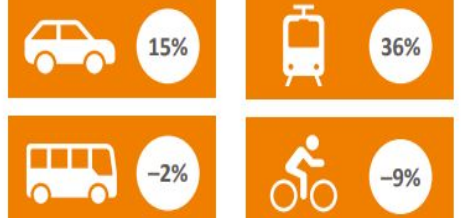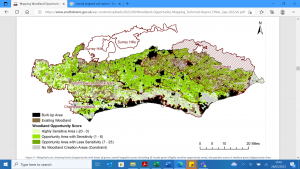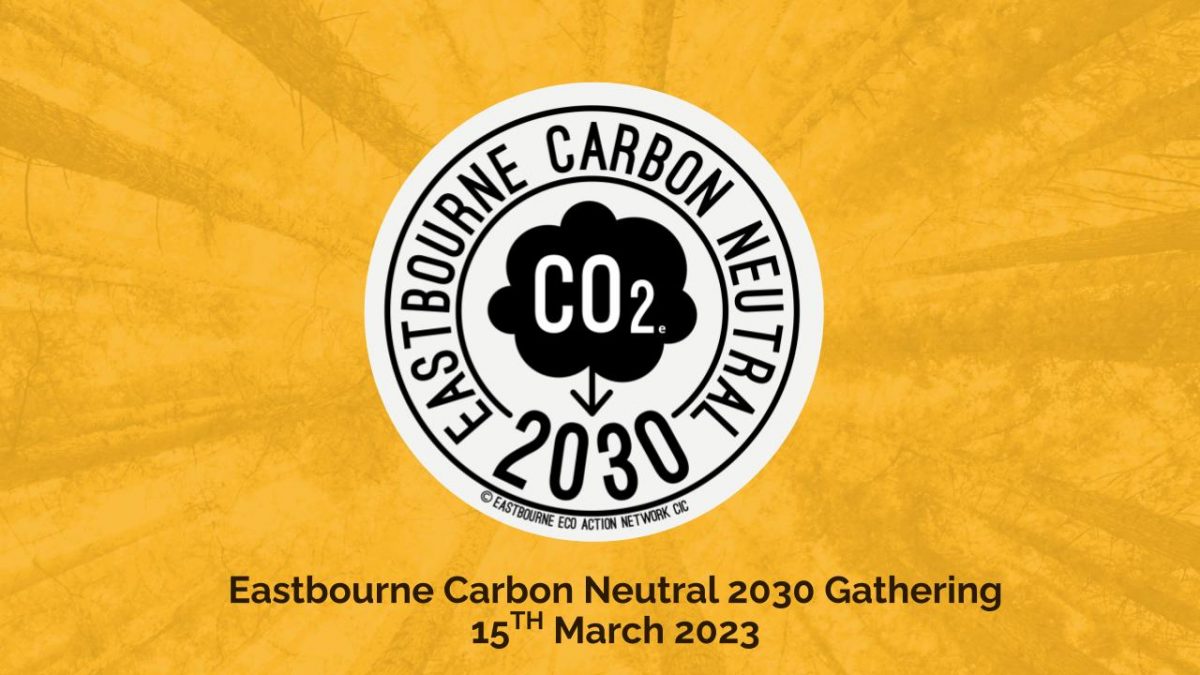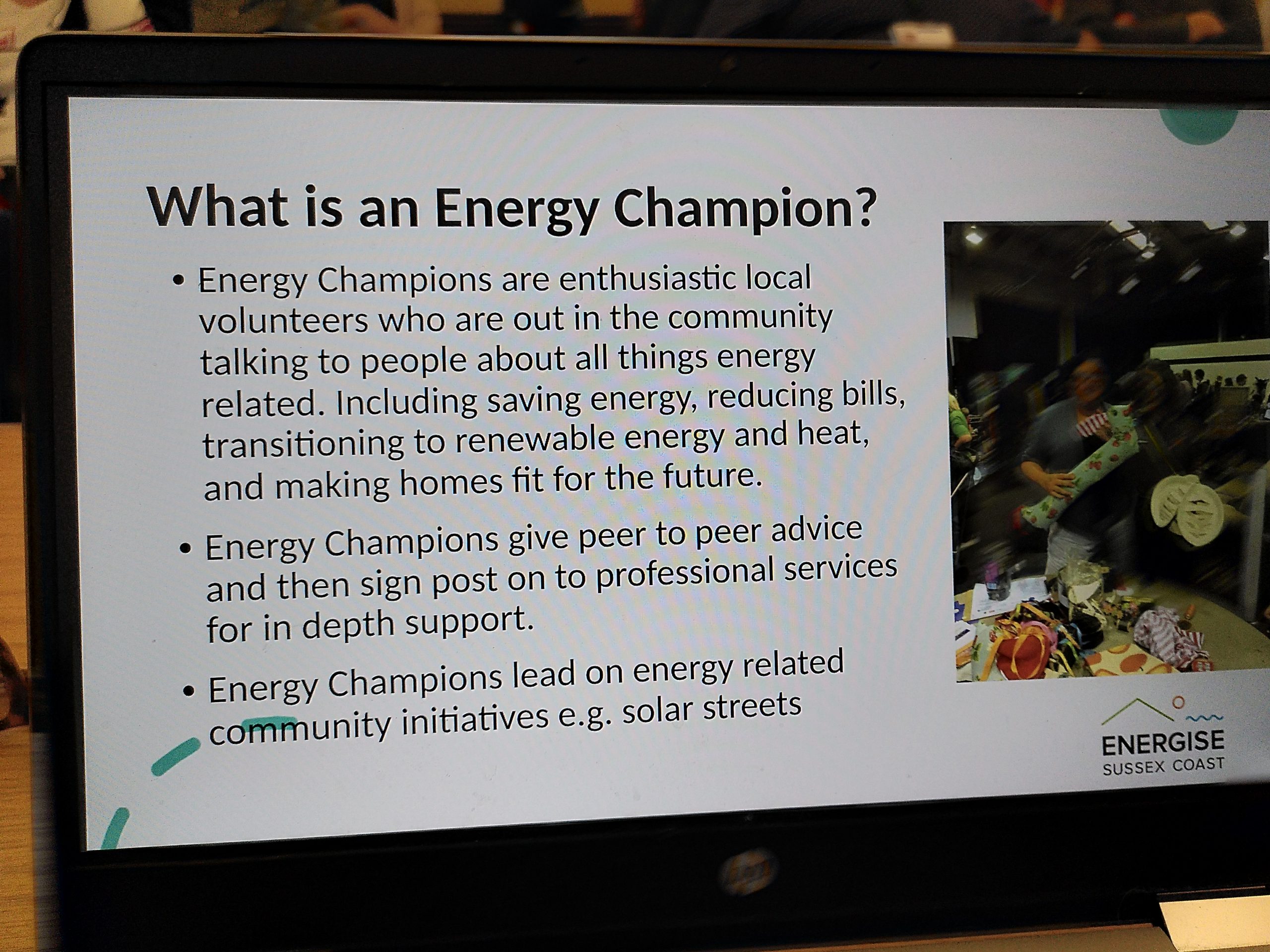The challenge to make transport Carbon Neutral in Eastbourne.
Most campaigners want Eastbourne Borough Council (EBC) to succeed in its 2030 Carbon Neutral target for the town. This is a hard task, as much of the CO2e transport footprint, is down to individuals, where EBC has limited influence. So the questions are:- firstly can transport become carbon neutral and secondly if so by what date.
Currently both Transport for South East (TfSE) and East Sussex County Council (ESCC) are planning for the future of transport . So this is a good time to examine what might happen
Below is what EBC think would be the required reduction in internal combustion cars. In reality current levels in the UK are a long way from this.

Also identified is their High Ambition scenario – (Eastbourne Carbon Neutral 2030 Appendix 1) which still has over 70k tonnes CO2e for transport.
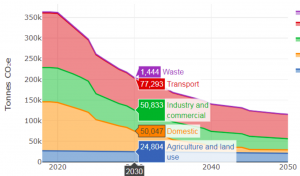
The problem for the town is the dominance of private cars and so far nothing has been done to reduce it. Projections by EBC show, at best, a slight decline from 80% in 2017 to 75% in 2030.
However carbon should be considered alongside other improvements such as health, reduced congestion and social inclusion. For example moving to private Electric Vehicles does little to reduce congestion or social inclusion.
Meanwhile as background bus numbers have collapsed
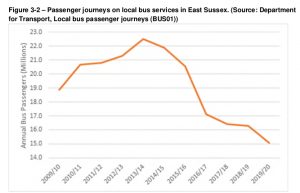
.
Much the same problem for cycling , where the share of trips is 2%, and has declined over the years.
So 2 hopes for reducing carbon are
1) Increase the number of electric vehicles. Some projections are 40% of vehicles by 2030. They either have a zero footprint or around 40% of an internal combustion engine, if all their manufacture and disposal is included. So the possible improvement on carbon is 40% to 60% but no change in congestion
2) A reduction in the share of car trips. In Council and Borough Council documents there is frequent mention of 10% fewer car journeys. Initially in the Hailsham, Polegate Eastbourne Corridor but then often quoted in residential planning applications. This would require around 150% more cycle trips, 125% more bus journeys and 33% more journeys on foot. This against a background of more traffic in the area, due to more housing, especially in South Wealden.
So what are the projections for the future? From an active travel perspective the TfSE’s ‘Our Route for Growth’ is very disappointing. Note the cycle icon also covers walking
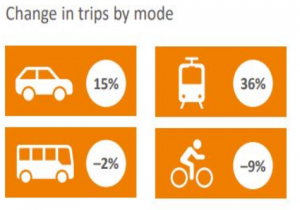
It is hoped that the East Sussex Local Transport Plan will be more positive. To make a real change planning needs to be more daring . Here including both Push and Pull measures.

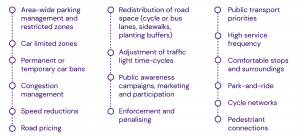
These are some further measures that could be undertaken, based on Ashden’s 31 Actions for Councils
* Ban or discourage private cars from the city centre
* Establish urban consolidation centres
* Encourage car sharing
* Enable the rapid shift to electric vehicles through EV charging
* Replace existing buses with electric buses
* Deliver a rapid transition of the council’s own fleet to electric
* Require all taxis to be electric through licensing
* Reduce the need to own and use a car through the local plan
So in conclusion, there is much that could be done, to reduce the carbon footprint of the town. But … to be really effective it would have to be transformational. The alternative is worsening congestion and a slow improvement in CO2e based mainly by adopting electric vehicles. From the campaigners’ viewpoint this is simply not enough and too slow
Paul Humphreys – EEAN Transport Group

